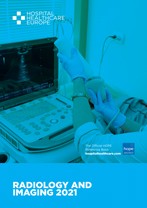After a myocardial infarction, assessing the extent of damage is essential but difficult. Now manganese-enhanced MRI offers an innovate approach to evaluate myocardial viability within one hour of an infarct.
The use of cardiac imaging has become an important tool in the assessment of heart disease although current imaging is unable to quantify one of the most important elements of patient morbidity, myocardial viability. Although gadolinium-enhanced magnetic resonance imaging is used to assess myocardial damage such as scar tissue, potential problems with its use include accumulation of chelated gadolinium within the infarct area and some evidence points to accumulation of the element in the brain. Alternatives such as PET scanning can be used to evaluate myocardial metabolism via the accumulation of the radioactive glucose analogue, [18F]-fluorodeoxyglucose within metabolically active cells, the analogue can also be taken up by immune cells present within the infarct. One factor that is highly sensitive to myocardial contraction is the metal calcium and contractility is regulated by changes in the levels of intracellular calcium. Unfortunately, intracellular calcium levels cannot be measured using non-invasive techniques. One solution is to use an alternative metal ion which is able to enter living cells using the same transport systems as calcium: such a metal ion is manganese, which is also used as an MRI contrast agent and for which levels can be quantified in vivo as a surrogate measure for calcium. In fact, studies have shown how manganese-enhanced MRI (MEMRI), using for example, the chloride salt, can be successfully used in cardiovascular MRI in humans. Nevertheless, once within cells manganese acts competitively with calcium, reducing myocyte contractility hence potentially limiting its role. While a chelated form, Mn-DPDP (manganese dipyridoxyl disphosphate) is approved for clinical imaging, chelation of manganese, while enhancing its safety profile, does reduce the extent to which it is desirable with respect to cardiac imaging. Moreover, studies have suggested that combining manganese with calcium gluconate has shown great promise for cardiac imaging.
For this study, a team from the Centre for Advanced Biomedical Imaging, University College, London, evaluated the real-time effects of manganese with or without the addition of the calcium gluconate on action potentials in vitro mouse and human cardiomyocytes and cardiac contractility in mice.
Findings
Initially, the team evaluated whether manganese affected in vitro beating rates and action potentials in cardiomyocytes and cardiac contractility in mice. Addition of manganese chloride reduced cardiomyocyte beating rates. However, when supplementing the manganese chloride with calcium gluconate, beating was restored. These data indicated that the cardio-depressant effect of manganese chloride can be negated if co-administered with a calcium supplement.
After inducing a myocardial infarction, the researchers investigated manganese uptake after the infarction. Quantitative T1 mapping-manganese-enhanced MRI revealed elevated and increased uptake of manganese in viable myocytes away from the area of the infarct.
Commenting on their findings, the authors reported on how their data suggest that manganese-enhanced MRI offers an important new method for evaluating myocardial viability in as little as one hour after an infarction. Although high doses of manganese reduced myocardial contractility, the use of a calcium gluconate supplement reduced these effects, indicating that the co-use of these metal ions could be employed as MRI contrast agents.
The authors concluded that the use of a manganese-based contrast agent could potentially be used early after a myocardial infarction to evaluate the extent of remaining myocardial viability.
Citation
Jasmin NH et al. Myocardial viability imaging using manganese-enhanced MRI in the first hours after myocardial infarction. Adv Science 2021. https://doi.org/10.1002/advs.202003987





